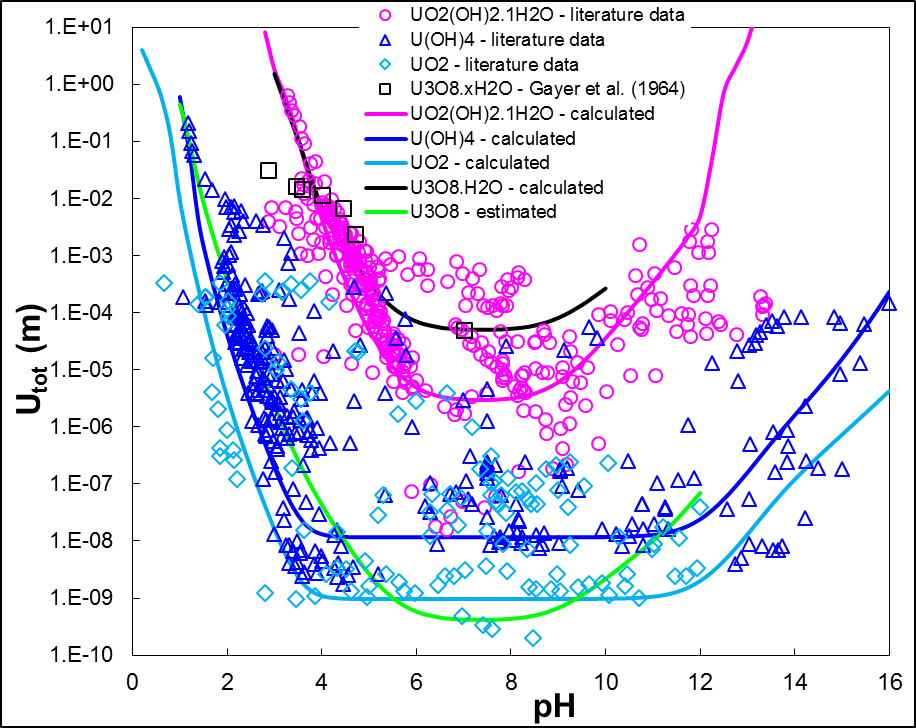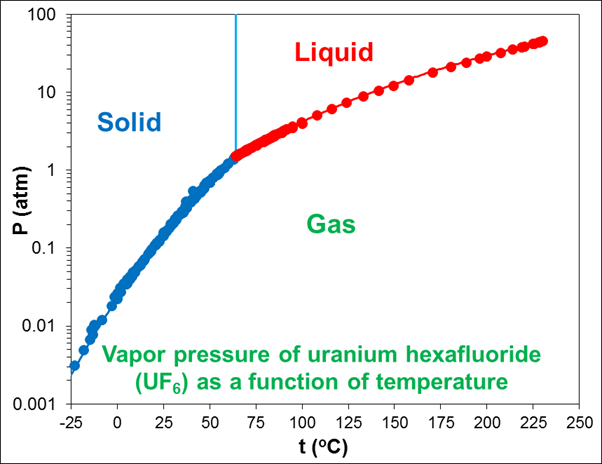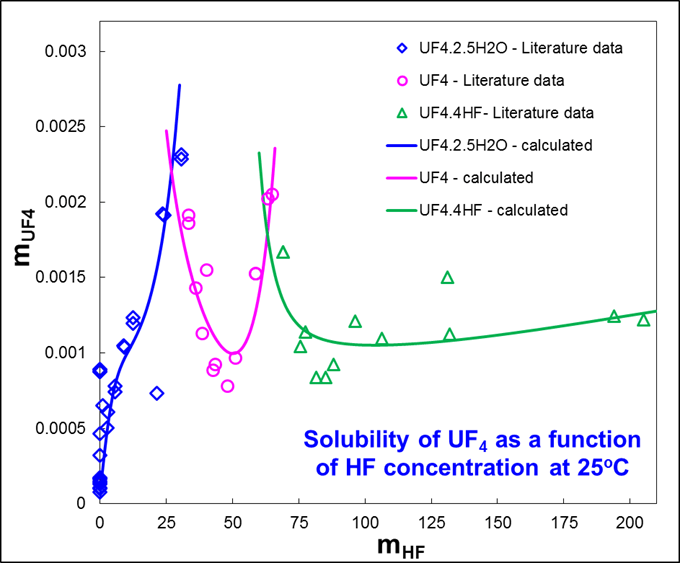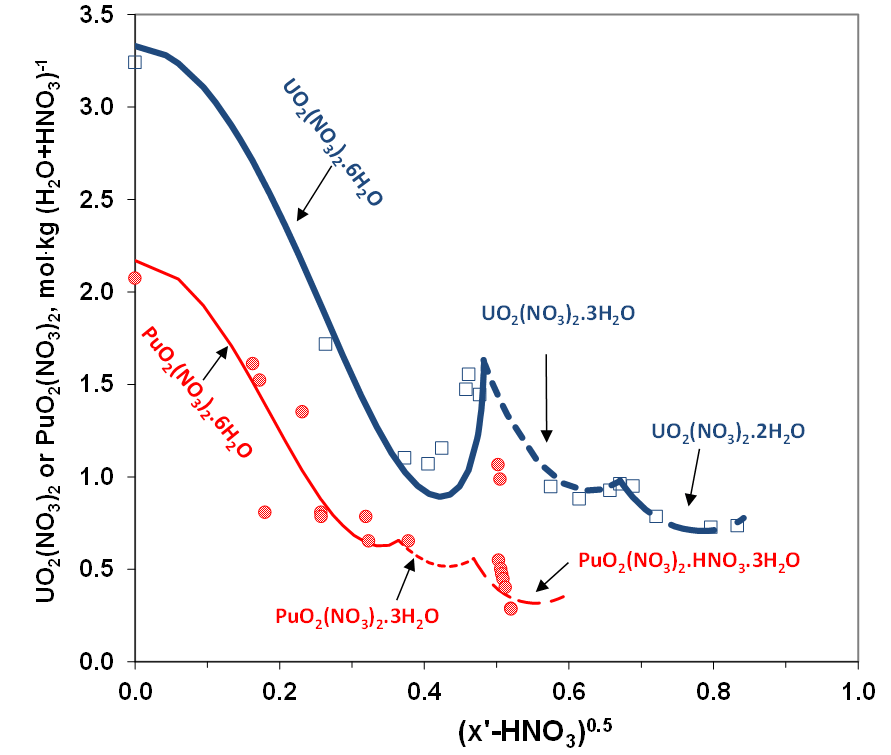What are actinides?
Actinides belong to group III of elements in the Periodic Table and form a family of 15 radioactive metallic chemical elements. Uranium (U) and thorium (Th) are naturally occurring, lithophilic metals found in ores, minerals, soil, groundwater, and seawater. The Earth’s crust contains about 2-4 ppm U and three times more Th, reflecting their wide distribution in nature. Approximately 5% of all known minerals contain U as an essential structural constituent. Primary U minerals include uranite and pitchblende, where U occurs in the form of yellowcake with composition varying from UO₂ to UO₂.₆₇, usually characterized as U₃O₈. Th is commercially recovered from the mineral monazite. Small amounts of neptunium (Np) and plutonium (Pu) have been found in uranium ores as a result of natural nuclear reactions. Actinium (Ac) and protactinium (Pa) are found in nature as decay products of some Th and U isotopes. The remaining actinides were artificially synthesized in laboratories.

A little bit of a history leading to current applications of actinides
Yellowcake was used as coloring agents in ceramic glazes and glass in ancient Rome and in the Middle Ages. For the first time, UO₂ was extracted from uranite in 1789. In 1896, Antoine Becquerel discovered that U exhibited invisible light or rays: Radioactivity. In 1934, the research by Enrico Fermi and others eventually led to the use of fissile ²³⁵U, one of U isotopes, in the first nuclear weapon and later for nuclear power production. Various beneficial radioisotopes are produced in nuclear reactors, which are currently used for diagnostic medical procedures, cancer therapies and even in-home safety applications (smoke detectors). In fact, Marie and Pierre Curie’s study of radioactivity and discovery of radium (Ra) can be seen as the first peaceful use of nuclear energy and the start of modern nuclear medicine.
Unusual properties of actinides and their industrial applications
Actinides exhibit a wide range of remarkably useful physical properties. They are metals with a very large atomic masses and radii. Actinides exist in several oxidation states depending on environmental conditions and form solid compounds with most nonmetals and stable complexes with various ligands (fluorides, carbonates, chlorides, nitrates). However, the most important and beneficial properties of actinides include their radioactivity, a large number of radioactive isotopes and the fact that some of them have fissile nuclei. Isotopes of U and Pu are the most important fissionable materials in nuclear power production, which continues to be one of the largest sources of clean and reliable carbon-free electricity available. However, the byproducts of nuclear energy (or spent fuel) is a radioactive material, which can be extremely toxic and needs to be securely disposed of and stored.
Can we reliably predict the behavior of actinides in aqueous systems?
Actinide-containing systems are complex in nature and their chemical and phase behavior can be affected by a multitude of variables. Detailed knowledge of the chemical speciation of actinides in solution and the solubility behavior of actinide solid phases are of particular interest in nuclear waste disposal and nuclear fuel recycling processes. The behavior of the radionuclides in these applications strongly depends on the conditions at which their chemical forms may change due to hydrolysis, complexation, and formation of solid phases. In addition, alteration of redox conditions can induce changes in the oxidation state of actinides resulting in the change of chemical and phase behavior. The chemistry and phase behavior of radioactive actinides have been extensively studied for several decades but these measurements inevitably pose difficulties and serious safety concerns. Therefore, a reliable method for predicting actinide solution chemistry is of utmost importance. OLI’s Mixed-Solvent Electrolyte (MSE) model available in OLI software platform V10 provides an accurate tool to reproduce phase equilibria and chemical speciation in multicomponent systems containing U, Pu, Am, Cm and Np in the presence of common acids, bases, salts and CO₂.
What is the nuclear fuel cycle?
Before U can be used to fuel a nuclear reactor, it must be mined, processed into yellowcake (U₃O₈), and used to manufacture fuel rods that are inserted into reactors. Spent fuel then needs to be stored in safe sites and possibly reprocessed. The whole process from mining to spent fuel storage is called the uranium fuel cycle and it consists of the following steps:
- Mining, milling, refining and production of yellowcake (U₃O₈)
- Conversion of U₃O₈ into gaseous uranium hexafluoride (UF₆) and enrichment
- Fabrication of fuel for nuclear reactions
- Electricity production in nuclear power plants
- Waste management – spent fuel storage and disposal
- Reprocessing and mixed oxides (MOX) fuel fabrication
There is a very rich chemistry behind every single step of the nuclear cycle and the MSE thermodynamic framework in the OLI software platform V10 can simulate these complex chemistries.
How can we use the MSE model for complex aqueous actinide solutions?
In the first step of the nuclear fuel cycle, U ore is mined, milled, and sent to a metallurgical plant. Various chemical processes (acid dissolution, extraction, precipitation, reduction, and oxidation) are used to extract it from ore and the final product consists of a mixture of U oxides, mainly U₃O₈. Therefore, it is very important to know the solubility of various U oxides as a function of the solution pH. The MSE model was used to develop thermodynamic parameters for these oxides based on an enormous number of experimental data (open symbols), which are shown in Figure 1. The solid green line shows the estimated solubility of U₃O₈ confirming that it is one of the most stable forms of U.

It is of interest to examine the physical reasons why UF₆ is used in the transportation, storage, and enrichment of U. The solid lines in Figure 2 show equilibria between the gas, liquid, and solid phases of UF₆. They were calculated using the MSE model based on experimental measurements (solid symbols). Uniquely among uranium compounds, UF₆ is a solid at room temperature (25⁰C) and a gas at temperatures above 57⁰C. The UF₆ triple point, which is slightly above the normal atmospheric pressure is also seen in Figure 2. Therefore, after converting U₃O₈ into gaseous UF₆, the latter can be conveniently used as a liquid for filling or emptying containers or equipment, and as a solid for storage and transportation, all at temperatures and pressures commonly used in industrial processes. Most nuclear reactors require enriched U fuel, where the content of the ²³⁵U isotope is raised from its natural level of 0.7% to about 3.5-5%. In this case, the solid UF₆ is heated and converted into a gas phase, which is sent for enrichment using gaseous diffusion or gas centrifuging.

Intermediate compounds such as uranium tetrafluoride (UF₄) are also important in conversion and reconversion between UF₆ and U₃O₈ and also in the waste management and reprocessing steps. Therefore, it is of interest to simulate which phases are stable in aqueous solutions of UF₄ and HF. In this case, the MSE model was used to predict the solubility of three solid phases that may exist in this system. Figure 3 shows the calculated solubilities of UF₄.·2.5H₂O, UF₄ and UF₄·4HF (solid lines) as a function of HF concentration and compares them with experimental data (symbols).

In fuel reprocessing, U and Pu are separated using nitric acid (HNO₃) followed by solvent extraction. Again, the MSE model is able to reproduce the solubilities of complex hydrates of U and Pu nitrates as a function of nitric acid (lines in Figure 4). The separation is possible because the hydrated salts of Pu (solid symbols) show markedly lower solubilities than those of U at any acid concentration in agreement with experimental data.

What tools are available for simulating actinide chemistry?
OLI System’s thermodynamic property package, which implements the MSE model, is available in OLI Studio V10 and OLI Flowsheet ESP V10.
Contact OLI for more information or to schedule a meeting with an OLI expert.
How to learn more about simulating actinide chemistry?
For a more detailed description of how the MSE model can predict the solution chemistry of actinides, see the paper:
P. Wang, A. Anderko, J.J. Kosinski, R.D. Springer and M.M. Lencka, “Modeling Speciation and Solubility in Aqueous Systems Containing U(IV, VI), Np(IV, V, VI), Pu(III, IV, V, VI), Am(III), and Cm(III),” Journal of Solution Chemistry (2017) 46:521-588.

